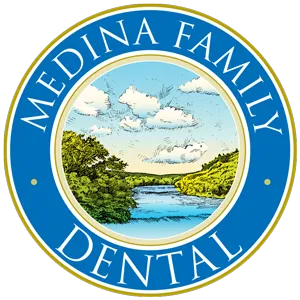TREATMENT
TREATMENT
Periodontal treatment methods depend upon the type and severity of the disease. Your dentist and dental hygienist will evaluate for periodontal disease and recommend the appropriate treatment.
Periodontal disease progresses as the sulcus (pocket or space) between the tooth and gums gets filled with bacteria, plaque, and tartar, causing irritation to the surrounding tissues. When these irritants remain in the pocket space, they can cause damage to the gums and eventually, the bone that supports the teeth!
If the disease is caught in the early stages of gingivitis, and no damage has been done, one to two regular cleanings will be recommended. You will also be given instructions on improving your daily oral hygiene habits and having regular dental cleanings.
If the disease has progressed to more advanced stages, a special periodontal cleaning called
scaling and root planing (deep cleaning) will be recommended. It is usually done one quadrant of the mouth at a time while the area is numb. In this procedure, tartar, plaque, and toxins are removed from above and below the gum line (scaling) and rough spots on root surfaces are made smooth (planing). This procedure helps gum tissue to heal and pockets to shrink. Medications, special medicated mouth rinses, and an electric toothbrush may be recommended to help control infection and healing.
If the pockets do not heal after scaling and root planing, periodontal surgery may be needed to reduce pocket depths, making teeth easier to clean. Your dentist may also recommend that you see a periodontist (specialist of the gums and supporting bone).
Periodontal treatment methods depend upon the type and severity of the disease. Your dentist and dental hygienist will evaluate for periodontal disease and recommend the appropriate treatment.
Periodontal disease progresses as the sulcus (pocket or space) between the tooth and gums gets filled with bacteria, plaque, and tartar, causing irritation to the surrounding tissues. When these irritants remain in the pocket space, they can cause damage to the gums and eventually, the bone that supports the teeth!
If the disease is caught in the early stages of gingivitis, and no damage has been done, one to two regular cleanings will be recommended. You will also be given instructions on improving your daily oral hygiene habits and having regular dental cleanings.
If the disease has progressed to more advanced stages, a special periodontal cleaning called scaling and root planing (deep cleaning) will be recommended. It is usually done one quadrant of the mouth at a time while the area is numb. In this procedure, tartar, plaque, and toxins are removed from above and below the gum line (scaling) and rough spots on root surfaces are made smooth (planing). This procedure helps gum tissue to heal and pockets to shrink. Medications, special medicated mouth rinses, and an electric toothbrush may be recommended to help control infection and healing.
If the pockets do not heal after scaling and root planing, periodontal surgery may be needed to reduce pocket depths, making teeth easier to clean. Your dentist may also recommend that you see a periodontist (specialist of the gums and supporting bone).
Bleeding gums– Gums should never bleed, even when you brush vigorously or use dental floss.
Loose teeth– Also caused by bone loss or weakened periodontal fibers (fibers that support the tooth to the bone).
New spacing between teeth– Caused by bone loss.
Persistent bad breath– Caused by bacteria in the mouth.
Pus around the teeth and gums– Sign that there is an infection present.
Receding gums– Loss of gum around a tooth.
Red and puffy gums– Gums should never be red or swollen.
Tenderness or Discomfort– Plaque, calculus, and bacteria irritate the gums and teeth.
Removal of calculus (tartar): Calculus is hardened plaque that has been left on the tooth for some time and is now firmly attached to the tooth surface. Calculus forms above and below the gum line and can only be removed with special dental instruments.
Removal of plaque: Plaque is a sticky, almost invisible film that forms on the teeth. It is a growing colony of living bacteria, food debris, and saliva. The bacteria produce toxins (poisons) that inflame the gums. This inflammation is the start of periodontal disease!
Teeth polishing: Remove stain and plaque that is not otherwise removed during tooth brushing and scaling.
RELATED PROCEDURES
RELATED PROCEDURES
What is Periodontal (Gum) Disease?
Diagnosis
Treatment
Maintenance
What is Periodontal (Gum) Disease?
Diagnosis
Treatment
Maintenance
RELATED PROCEDURES
Dental Exams & Cleanings
Dental X-rays
Home Care
How to Properly Brush & Floss
Schedule A Visit With Us Today!
Questions?
Give us a call today!
Address:
1313 Petersburg Street
Castroville, Texas 78009
Email:
Hours:
Monday - Thursday 8am to 5pm
Closed Friday - Sunday
© 2025. Medina Family Dental.
All Rights Reserved. Opt-In Form.


